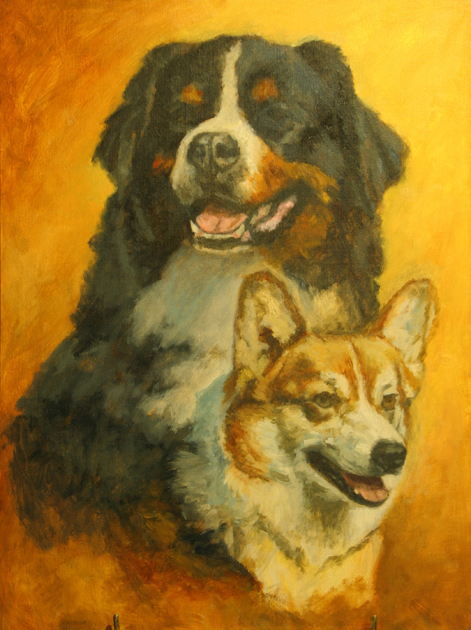Oil Painting Progression, Part 3 – “Form & Texture”
This is the part where our painting tutorial gets a bit tricky for me. The steps of progression tend to be a bit more subtle at this point and I don’t want things to get boring or look like there’s nothing happening. But then again, that kind of describes the very nature of a painting’s progression in these intermediate stages. A casual observer may not necessarily even notice the artwork changing from one day to the next. But it is. Just as establishing confident shape and value relationships in the earliest stages of the painting lays a solid foundation for the rest of the process, so too do the increasingly refined marks made in paint at these middle stages lay the foundation of a sense of light and texture which ends up perceptible in the finished piece. OK, let’s go!

The above image illustrates the further delineation of edges and areas of color which were only loosely laid down in our last installment. Light areas have been brightened and dark areas darkened. For me, the mindset has now become one of envisioning the ultimate state of the creation I’m working on. To some, it may seem very early to be thinking in such a way. Some artists may cringe at the idea of thinking “finished” so early on in our layering of paint. Have no fear, there is still considerable work ahead at a stage like this. But thinking of early brushstrokes becoming a final piece of art is kind of like a sprinter keeping his eyes trained on that point just past the finish line, even after the gun has just barely fired.
So, in the spirit of seeing the “end from the beginning,” as it were, the objective becomes one of making the structures of the two dogs begin to appear as three dimensional as possible under these relatively early conditions of the artwork. Heightening the contrast of darks and lights, as mentioned earlier, helps in this process. However, even more important is the establishment of individual shapes of extreme highlights (as on the dogs’ muzzles) and of extreme darks (as in the undulations of the larger dog’s ears and coat). Confidently establishing specific shapes of extreme lights and darks begins to give the illusion of real light reflecting off of three dimensional form. By “extreme” I don’t necessarily mean using pure white and black. I simply mean describing general areas of where light hits most directly and where shadow is most prevalent.
Add to the above the beginnings of sketchy paint application, meant to imitate the texture of fur, plus the beginnings of other textures (like wet tongues and noses), and one can see that this phase really isn’t too early to begin thinking about the kind of realism one wants to see expressed in the finished artwork. To me, establishing these impressions as early as possible goes a long way to motivate me even more to keep the art moving in this direction, leaving no time for distraction with whether I’ve taken “long enough” to earn a finished piece. When the painting looks finished, that means you’ve taken long enough!
On a side note, I’ll mention the golden yellow hue to the images in this progression. These photos were taken indoors under a regular 60W light bulb. I typically make efforts to color-correct photos taken of my art, which is something I haven’t done with these, and so they remain a bit yellowy compared with the actual colors used. Please feel free to refer to the finished painting for a better idea of the actual hues employed in the artwork. Or not, if you don’t want to spoil the ending!
